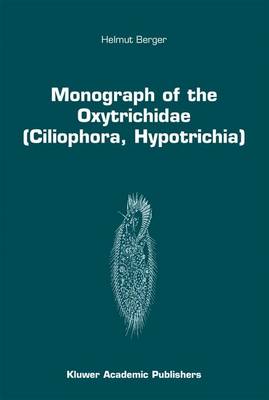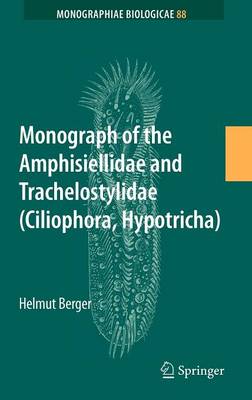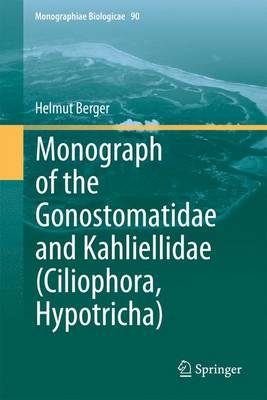Monographiae Biologicae
4 primary works
Book 78
(iv) Synonymy is discussed, and not only mentioned, as is unfortunately usual.
Book 85
This is the second book of a series treating the hypotrichs, a major part of the spirotrichous ciliates. It summarises 230 years of morphological, morphogenetic, faunistic, and ecological data, heretofore scattered in some 1,300 references around the world. The book provides taxonomists, cell biologists, and ecologists with a thorough survey supplying synonyms, nomenclature and systematics, and an extensive description of morphology and ecology, including almost all published records, for each species.
Book 88
Monograph of the Amphisiellidae and Trachelostylidae (Ciliophora, Hypotricha)
by Helmut Berger
However, morphological and molecular data indicate that the zigzag pattern of U- leptus evolved independently, that is, convergently to that of the urostyloids. Thus, Uroleptus was excluded from the urostyloid review. A zigzag pattern is also known from some oxytrichids, for example, Neokeronopsis, Territricha, Pattersoniella, showing that this pattern evolved several times independently (Berger 1999, 2006, Foissner et al. 2004).
Book 90
Monograph of the Gonostomatidae and Kahliellidae (Ciliophora, Hypotricha)
by Helmut Berger
The present monograph is the fourth of six volumes which review the Hypotricha, a major group of the spirotrichs. The book is about the Gonostomatidae, the Kahliellidae, and some taxa of unknown position in the hypotrichs.
Gonostomum was previously misclassified in the Oxytrichidae because its type species Gonostomum affine has basically an 18-cirri pattern, which is dominant in the oxytrichids. A new hypothesis, considering also molecular data, postulates that this 18-cirri pattern evolved in the last common ancestor of the hypotrichs and therefore it appears throughout the Hypotricha tree. The simple dorsal kinety pattern, composed of only three bipolar dorsal kineties, and gene sequence analyses strongly suggest that Gonostomum branches off rather early in the phylogenetic tree. Thus, the Gonostomatidae, previously synonymised with the oxytrichids, are reactivated to include the name-bearing type genus and other genera (e.g., Paragonostomum, Wallackia, Cladotricha) which have the characteristic gonostomatid oral apparatus. The Kahliellidae are a rather vague group mainly defined via the preservation of parts of the parental infraciliature. The kahliellids preliminary comprise, besides the name-bearing type genus Kahliella, genera such as Parakahliella and its African pendant Afrokahliella or the monotypic Engelmanniella. In total 68 species distributed in 21 genera and subgenera are revised. As in the previous volumes almost all morphological, morphogenetic, molecular, faunistic, and ecological data, scattered in almost 700 papers, are compiled so that the four volumes (Oxytrichidae, Urostyloidea, Amphisiellidae and Trachelostylidae, Gonostomatidae and Kahliellida) provide a detailed insight into the biology of almost 500 species of hypotrichs. The series is an up-to-dateoverview about this highly interesting taxon of spirotrichous ciliates mainly addressed to taxonomists, cell biologists, ecologists, molecular biologists, and practitioners.



